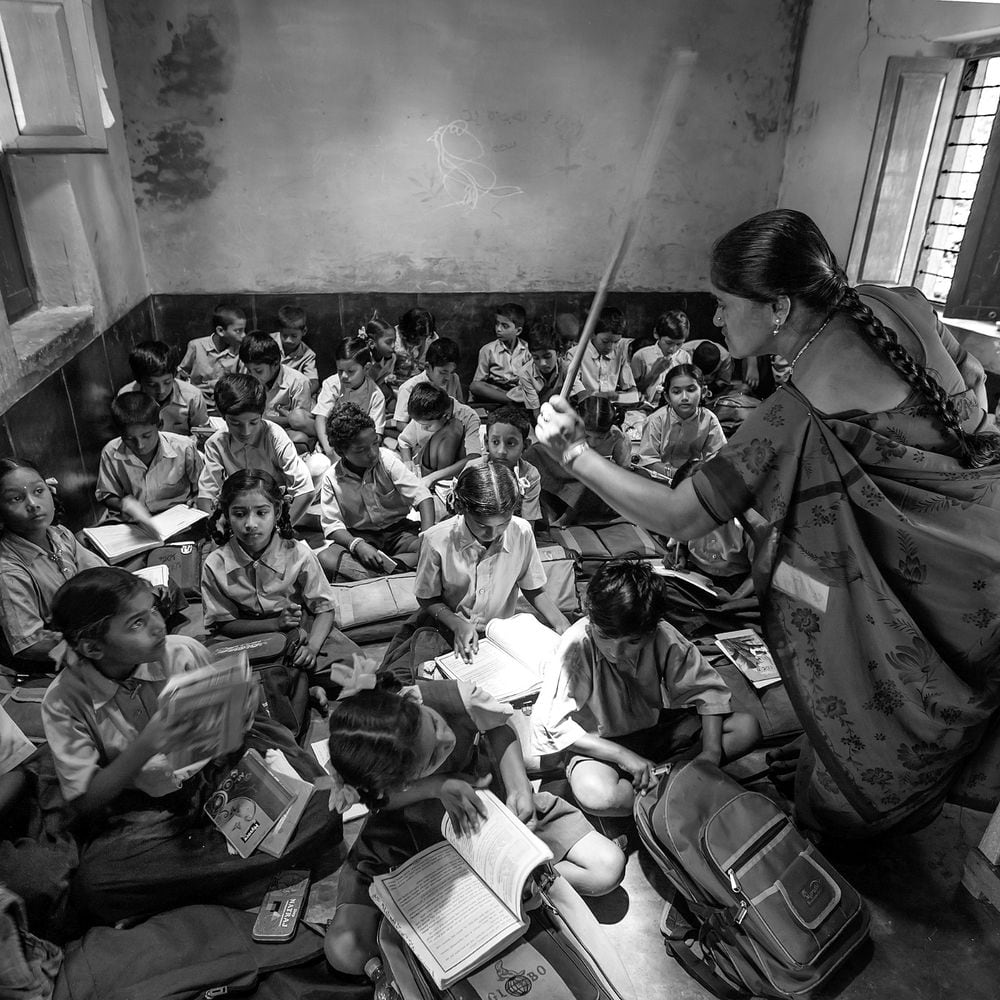Among classrooms with names of writers, the corridors of the Cloister of San José de Caracciolos of the University of Alcalá are dressed with a selection of 53 photographs. It’s about the exhibition Black and white is more real, available until March 26 and accessible to the public during the first weeks through guided tours with prior reservation. The images are also part of a virtual auction for the benefit of the NGO Reporters Without Borders.
The pieces in the collection were donated in December by the creator of the Espacio Raw printing workshop, David López, after a move that left them with no place to store. In the midst of a pandemic that has deeply affected the coffers of the journalism foundation, López decided to make them available to him, with the consent of the photographers. With the support of the Department of Exhibitions and the Photography Room of the General Foundation of the University of Alcalá (FGUA), the exhibition, which includes portraits, landscapes, photojournalism and experimental photos, reflects on the way in which these photographs in white and black appeal to memory, nostalgia and propose a leisurely look at reality.
After López offered Reporters Without Borders to donate the collection, a catalog with the works was published in a matter of two months –accessible via the Internet-. In addition, the 53 pieces by internationally recognized photographers, such as Isabel Muñoz, Eduardo Momeñe, Matías Costa, Manuel Viola, and Andrea Santolaya, among others, were distributed throughout the cloister that houses the Faculty of Philology of the University of Alcalá by Natalia Garcés, director of the Photography Classroom of the FGUA and coordinator of exhibitions. Since the common thread of the exhibition had been previously established – López’s collection was of black and white photos – Garcés chose to organize them by categories, which invites us to review not only the photographic techniques but also the style and different ways to look.
For the director of Reporters Without Borders, Alfonso Armada, the exhibition is a blessing in the midst of especially difficult times for institutions like yours that depend on donations and contributions from their members. But, also, the collection offers an opportunity to rethink the photographic medium and color, an eternal debate in the world of photography. “There is a photo that is not in black and white and that is somewhat paradoxical. It was a catalog error that became a last minute proposal and in a way it is a wink. Reminded me of the movie Schindler’s List, where that little touch of color emphasizes more the power of black and white, which has to do with nostalgia, with memory, ”says Armadas, recalling the evolution of photography with his words.
However, his field is journalism and that is where he makes his greatest defense of black and white photography, not as an artistic medium, but as an especially rich language to communicate a certain look towards the world. “As a journalist, I am very disturbed by the noise we are living in right now. The noise of the opinions, of the voices everywhere, of the overwhelming color that I think generates a lot of confusion. So, in a way, these photos appeal to listening to realize that the leisurely gaze is important to later tell the stories well. Black and white photographs yell less, speak in a low voice and allow us to hear more and better, ”concludes Armada.
Beyond reflections, all the works that make up the exhibition can be purchased at an online auction at the Ansorena house between March 12 and 26, in which Reporters Without Borders will receive the full price paid, as no commission or commission will be applied. for the auction room or for buyers. To participate in the bid it is necessary to register on its website.
Black and white is more real It can be visited until March 26, but, for now, it will only be accessible with guided tours by prior reservation through the mail [email protected] or by calling 91 885 24 18, Monday through Friday at 1:00 p.m., and Wednesday and Friday at 7:00 p.m. On Sundays February 21 and March 7, there will be two extraordinary visits at 11.00 and 12.00. A round table on photography, pain and pandemic with Eduardo Momeñe and Andrea Santolaya, moderated by Alfonso Armada, will be held in parallel to the exhibition on February 26 at 6:00 p.m., as well as special guided tours with some of the photographers.
–


